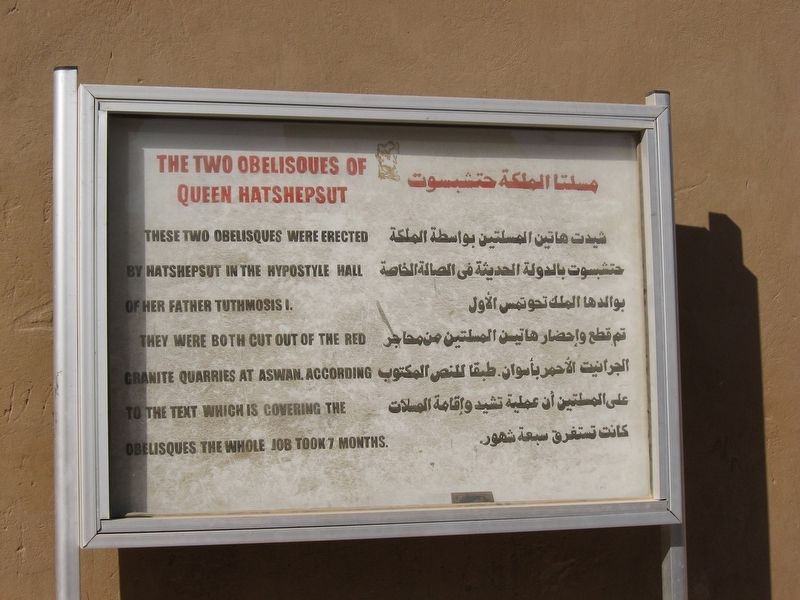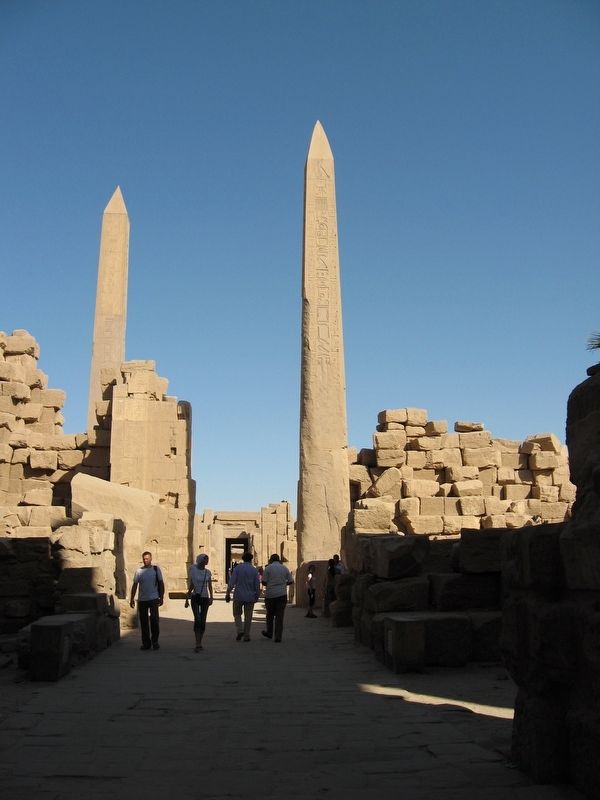Luxor, Egypt — مصر (Northeast Africa)
The Two Obelisques Of Queen Hatshepsut
They were both cut out of red granite quarries at Aswan. According to the text which is covering the obelisques the whole job took 7 months.
Topics. This historical marker is listed in this topic list: Notable Buildings.
Location. 25° 43.117′ N, 32° 39.517′ E. Marker is in Luxor. Located next to the Temple of Amon in the Karnak Complex, Luxor, Egypt. Touch for map. Touch for directions.
Other nearby markers. At least 1 other marker is within 6 kilometers of this marker, measured as the crow flies. Tomb of Thutmosis III (approx. 6.2 kilometers away).
More about this marker. The GPS coordinates provided are general to the temple complex.
Also see . . .
1. Hatshepsut (Wikipedia). Hatshepsut ( also Hatchepsut; meaning Foremost of Noble Ladies; 1507–1458 BCE) was the fifth pharaoh of the Eighteenth Dynasty of Egypt. She was the second historically confirmed female pharaoh, the first being Sobekneferu. (Various other women may have also ruled as pharaohs regnant or at least regents before Hatshepsut, as early as Neithhotep around 1600 years prior.) Hatshepsut came to the throne of Egypt in 1478 BCE. Officially, she ruled jointly with Thutmose III, who had ascended to the throne the previous year as a child of about two years old. Hatshepsut was the chief wife of Thutmose II, Thutmose III’s father. She is generally regarded by Egyptologists as one of the most successful pharaohs, reigning longer than any other woman of an indigenous Egyptian dynasty. According to Egyptologist James Henry Breasted she is also known as "the first great woman in history of whom we are informed." (Submitted on August 9, 2017.)
2. A World of Obelisks (NOVA Online / PBS). (Submitted on August 9, 2017.)
Credits. This page was last revised on February 11, 2022. It was originally submitted on August 8, 2017, by Brandon D Cross of Flagler Beach, Florida. This page has been viewed 440 times since then and 27 times this year. Photos: 1, 2. submitted on August 8, 2017, by Brandon D Cross of Flagler Beach, Florida. 3. submitted on August 9, 2017. • Andrew Ruppenstein was the editor who published this page.


